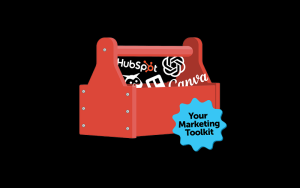So, your last brochure came back from your graphic design team looking nothing like what you envisioned. Even worse, it’s not going to have an impact on your customers. You return it for revisions, but you’re not quite sure how to say, “Start over again!” Back and forth emails ensue, everyone plays the blame game and no one is happy. Frustrated and out of time you finally settle on something no one really likes.
Yeah, we’ve been there, too, but a creative project doesn’t have to be difficult. In fact, it’s just the opposite if you’re prepared and ready to roll. Not sure what to do or where to start? Just follow our list of must-haves and make your next design project a breeze.
The Project Goal & Overview
It’s up to you to think ahead and arm your graphic design team with everything they need. They can’t work in a vacuum. Graphic designers often work creative magic, but they can’t read minds! This means your job starts before the first project discussions.
First, create an overview that clearly defines the final product. Is it a magazine, a book, or a mailer? Is this a digital job where you’ll need .pdf or .jpg files? Clients can sometimes explain a project but forget the finer points. Start at step one and spell out the simple details before getting complex.
A Creative Brief
Cover your bases by writing a thorough creative brief for your team. This is a detailed summary that clearly spells out the project goals, milestones, and responsibilities for everyone involved. Be as specific as possible, include information on the purpose of the project and its target audience(s), and share any files or examples.
Your first draft will not be perfect. Your design team will probably ask a lot of questions and identify any missing information they need. After you review everything together make any necessary adjustments. Design is often fluid, and involves step-by-step adjustments. Document the changes so everyone stays on the same page.
Related: CMYK vs RGB | What’s the Difference & When to Use Them
A Project Manager
You’ll save yourself a lot of time and struggle by designating one person as the lead. This project manager will compile and summarize all the internal dialogue – new ideas, revisions, approvals – and communicate them to your design team. If multiple points of contact are involved make sure their roles are clearly defined. One person might focus on the initial written content while another focuses on design feedback, etc. The engagement is better when the design team understands who to talk to about what.
AN INTERNAL REVIEW PROCESS
Every designer has a (horror) story about the project that went off the rails at the eleventh hour. Don’t wait until the very end to clue-in your boss or other important stakeholders. Instead, keep everyone in the loop and meet with your internal team before giving the go-ahead for production. Remember, those last-minute rush edits at the end of the process are expensive!

The Product specifications
Is this a mailer that needs to meet postal regulations? Are you interested in different types of high-end trade show displays? Is there an exact size you want, or do you need advice? Or maybe you have a size or idea you already love?
No matter what you need there are ways to meet your price point and creative goals. Your designer will help you figure out the specs and will walk you through the options — special colors, different paper types, special folds, etc. You’ll save yourself frustration and annoyance by ironing out as many project specs as possible before you get started.
A Content INVENTORY
Your content doesn’t need to be final for your first meeting, but you should start with an inventory. Identify what’s available and determine what needs to be created or acquired to support the project. Think of it like cooking: if you’re going to prepare a great meal you need all of the ingredients.
Review all your content with the design team – they’ll offer a professional assessment based on what you have on-hand. If your current copy doesn’t support the piece you may need to revise or amplify. The other alternative is to reconsider the end product; you may be dreaming of a brochure but perhaps your copy is best suited for a postcard. Talk it all through with the design team and trust their expertise.
If you’re supplying artwork get it ready. Find the vector files (print-ready) for your logos and the high resolution versions of any photographs. This takes some detective work and time to track everything down. The sooner you get started the better.
Related: 8 Campaign-Crushing Direct Mail Blunders & How to Avoid Them
Also, find out if your company has an established set of design guidelines. If you have a marketing or creative department, take time to reach out to them about set colors and brand standards. If you don’t have these, ask your design team to help establish some rules of the road for this campaign. This will also help everyone be more prepared the next time around.
Continue to update and revise your inventory during the entire engagement. When you find that missing image check it off the list! Make it easy for everyone (including yourself) by being organized – it will help the project stay on-track and on-budget.
Your Inspiration and Examples
You can learn a lot from a quick search – Pinterest, case studies of your competitors and brands you admire, etc. Tell your design team what you like, where you feel flexible and what is absolutely set-in-stone. Being really specific will produce a far better result than a generic “just use your creativity” statement.
You know your content and business best, so share as much as you can with your designers. Remember, your creative team members are your partners. They want to help you achieve a final product that makes you proud.




